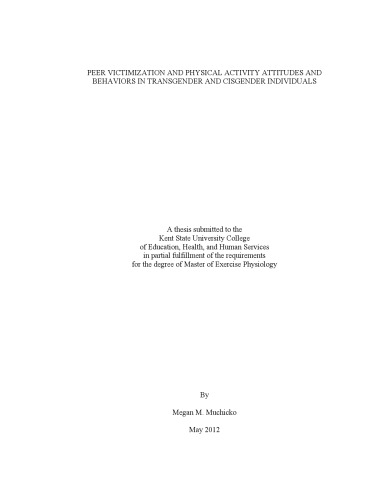Transgender individuals are more likely to be the targets of peer victimization than their cisgender counterparts. Emerging research has demonstrated a potential negative link between peer victimization and physical activity behavior. The purpose was to examine self-reported peer victimization, physical activity behavior and attitudes regarding physical activity in transgender and cisgender adults. Eighty (33 Transgender and 47 Cisgender) adults completed validated questionnaires assessing; peer victimization, physical activity behavior, social support for physical activity and self-efficacy for physical activity. The peer victimization questionnaire asked participants about their peer interactions as children and contained the following sub-scales: Overt Victimization Subscale (OVS), Relational Subscale (RS) and Pro-social Receipt Subscale (PRS). Each of these subscales was summed individually.
Transgender individuals had a significantly (p ??????? 0.05) greater BMI, OVS and RS and lower PRS, social support for physical activity and self-efficacy for physical activity than cisgender adults. There was a trend (p ??????? 0.06) towards a difference in physical activity between groups. Self efficacy (r ??????? 0.52), social support (r ??????? 0.49), PRS (r ??????? 0.34), OVS (r ???????= -0.3) and BMI (r = -0.25) were significantly (p ??????? 0.03) correlated to physical activity. RS (r ??????? -0.18) was not (p ??????? 0.1) correlated to physical activity. Transgender individuals were less physically active, received less social support, had lower self-efficacy, were more victimized and had a greater average BMI than cisgender individuals. Transgender individuals appear to be an excellent model for studying the effects of negative social interaction on physical activity behavior.







Reviews
There are no reviews yet.